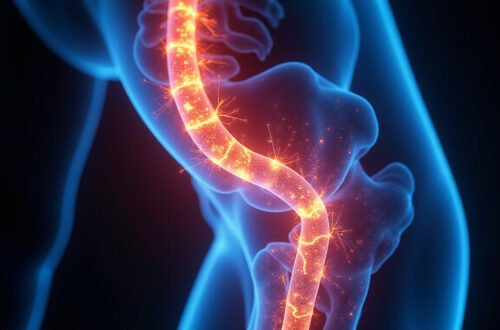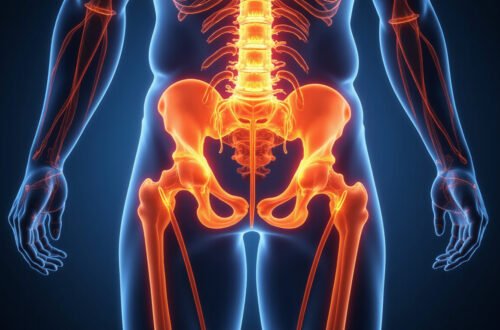Sciatica diagnosis is the critical first step toward effectively managing the often debilitating pain that radiates along the sciatic nerve. Recognizing the symptoms and understanding the diagnostic process can help you find relief and prevent further complications. In this article, we explore the essential steps involved in sciatica diagnosis, discuss common treatment options, and provide guidance on when to seek medical help.
Understanding Sciatica and Its Symptoms
Sciatica is not a condition itself but rather a symptom of an underlying issue involving the sciatic nerve, which runs from the lower back down each leg. When this nerve is compressed or irritated, it causes sharp, shooting pain, numbness, or tingling that typically affects one side of the body.
Common symptoms of sciatica include:
- Sharp or burning pain radiating from the lower back to the buttocks and down the leg
- Numbness or weakness in the affected leg or foot
- Tingling sensations often described as “pins and needles”
- Pain worsened by sitting, standing, or specific movements
Identifying these symptoms early is the foundation of an accurate sciatica diagnosis and effective treatment.
Step 1: Medical History and Symptom Evaluation
The sciatica diagnosis journey begins with a thorough medical history and symptom assessment. Your healthcare provider will ask about:
- The onset, duration, and frequency of your pain
- Specific areas affected by pain
- Activities or positions that worsen or relieve symptoms
- Previous injuries or medical conditions affecting your back or legs
- Any other neurological symptoms such as weakness or bladder dysfunction
A detailed symptom discussion helps differentiate sciatica from other causes of leg and back pain, guiding the need for further diagnostic testing.
Step 2: Physical Examination
After gathering your medical history, the physician conducts a physical exam to evaluate nerve function and confirm sciatic nerve involvement. Common tests during the physical exam include:
- Straight Leg Raise Test: You lie down as the doctor gently lifts your extended leg; pain radiating below the knee during this movement suggests nerve irritation.
- Reflex Testing: Reflexes in the knee and ankle are checked to detect any nerve damage.
- Muscle Strength Assessment: Evaluating strength in affected leg muscles can reveal areas where nerve compression has caused weakness.
- Sensory Testing: The doctor assesses sensation to light touch or pinprick to identify numbness or altered sensation.
Physical exam findings play a crucial role in narrowing down the cause of your symptoms and determining the urgency of further testing.
Step 3: Diagnostic Imaging and Tests
While many cases of sciatica can be diagnosed through history and physical exam alone, imaging and diagnostic tests help pinpoint the underlying cause and rule out serious conditions such as tumors or infections.
Common diagnostic tools include:
- X-rays: Useful to detect bone abnormalities like fractures, degenerative disc disease, or spinal stenosis.
- Magnetic Resonance Imaging (MRI): Provides a detailed view of soft tissues including discs, nerves, and spinal cord, helping identify herniated discs or nerve root compression.
- Computed Tomography (CT) Scan: May be combined with myelography to further evaluate nerve impingement when MRI is not feasible.
- Electromyography (EMG) and Nerve Conduction Studies: Assess the electrical activity of muscles and the speed of nerve signals to detect nerve damage or compression.
According to the American Academy of Orthopaedic Surgeons, MRI is considered the gold standard for visualizing nerve root compression in sciatica cases (source).

Step 4: Differential Diagnosis
An accurate sciatica diagnosis requires distinguishing sciatica from other conditions that cause similar leg or back pain, such as:
- Piriformis syndrome
- Peripheral neuropathy
- Hip joint disorders
- Vascular diseases
- Spinal tumors or infections
Your healthcare provider will consider these alternatives during the evaluation to ensure appropriate treatment.
Step 5: Treatment Planning and Management
Once a precise sciatica diagnosis has been made, the next step is crafting a treatment strategy tailored to your specific condition and severity of symptoms.
Common Treatment Options Include:
- Conservative Care: Most sciatica cases improve with nonsurgical treatments such as physical therapy, anti-inflammatory medications, and activity modifications.
- Heat and Cold Therapy: Applying heat or ice packs can reduce inflammation and relieve muscle spasms.
- Stretching and Strengthening Exercises: Targeted exercises help improve flexibility in the back and legs and strengthen supporting muscles.
- Epidural Steroid Injections: For more severe pain, corticosteroid injections can reduce nerve inflammation and provide temporary relief.
- Surgery: In rare cases where conservative therapies fail or neurological deficits worsen, surgical options such as microdiscectomy may be necessary to relieve nerve compression.
Your physician will guide you in choosing the best approach based on your diagnosis, pain level, and overall health.
Tips for Preventing Sciatic Pain Recurrence
After successful treatment, preventing sciatica flare-ups is critical. Here are key strategies:
- Maintain good posture and ergonomic position during work or activities
- Engage in regular low-impact exercise such as walking, swimming, or yoga
- Use proper body mechanics when lifting heavy objects
- Maintain a healthy weight to reduce pressure on the spine
- Avoid prolonged sitting without breaks to reduce nerve strain
By integrating these habits into your daily routine, you can minimize the chance of sciatica returning.
FAQ: Common Questions About Sciatica Diagnosis
Q1: How long does it take to get an accurate sciatica diagnosis?
A: Diagnosis time varies depending on symptoms and availability of diagnostic tests, but many patients receive an initial evaluation within days to weeks of symptom onset.
Q2: Can sciatica diagnosis be done through home tests?
A: While some self-assessments can indicate possible sciatica, a full diagnosis requires a professional evaluation including physical exam and often imaging to confirm nerve involvement.
Q3: Is imaging always necessary for sciatica diagnosis?
A: Not always. If symptoms are mild and improve with conservative treatment, imaging may not be needed. However, persistent or worsening symptoms often require MRI or other tests.
Conclusion: Take Control with Timely Sciatica Diagnosis and Care
A prompt and accurate sciatica diagnosis is the cornerstone of effective pain relief and functional recovery. Understanding the diagnostic journey—from symptom recognition and clinical exam to imaging and treatment options—empowers you to advocate for the care you need. Don’t let sciatic pain slow you down. If you experience persistent leg or lower back pain, seek medical evaluation promptly to begin your path toward lasting relief. Take the first step today and consult with a healthcare professional specialized in spinal health to get a comprehensive sciatica diagnosis and personalized treatment plan. Your comfort and mobility are worth it.






